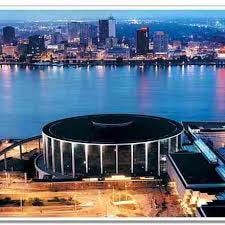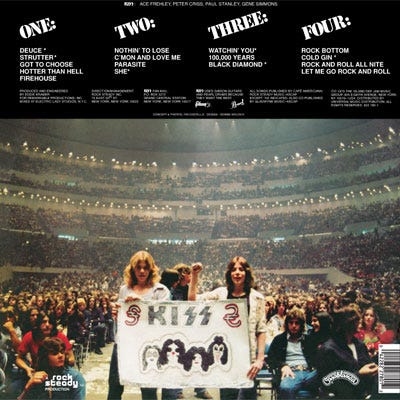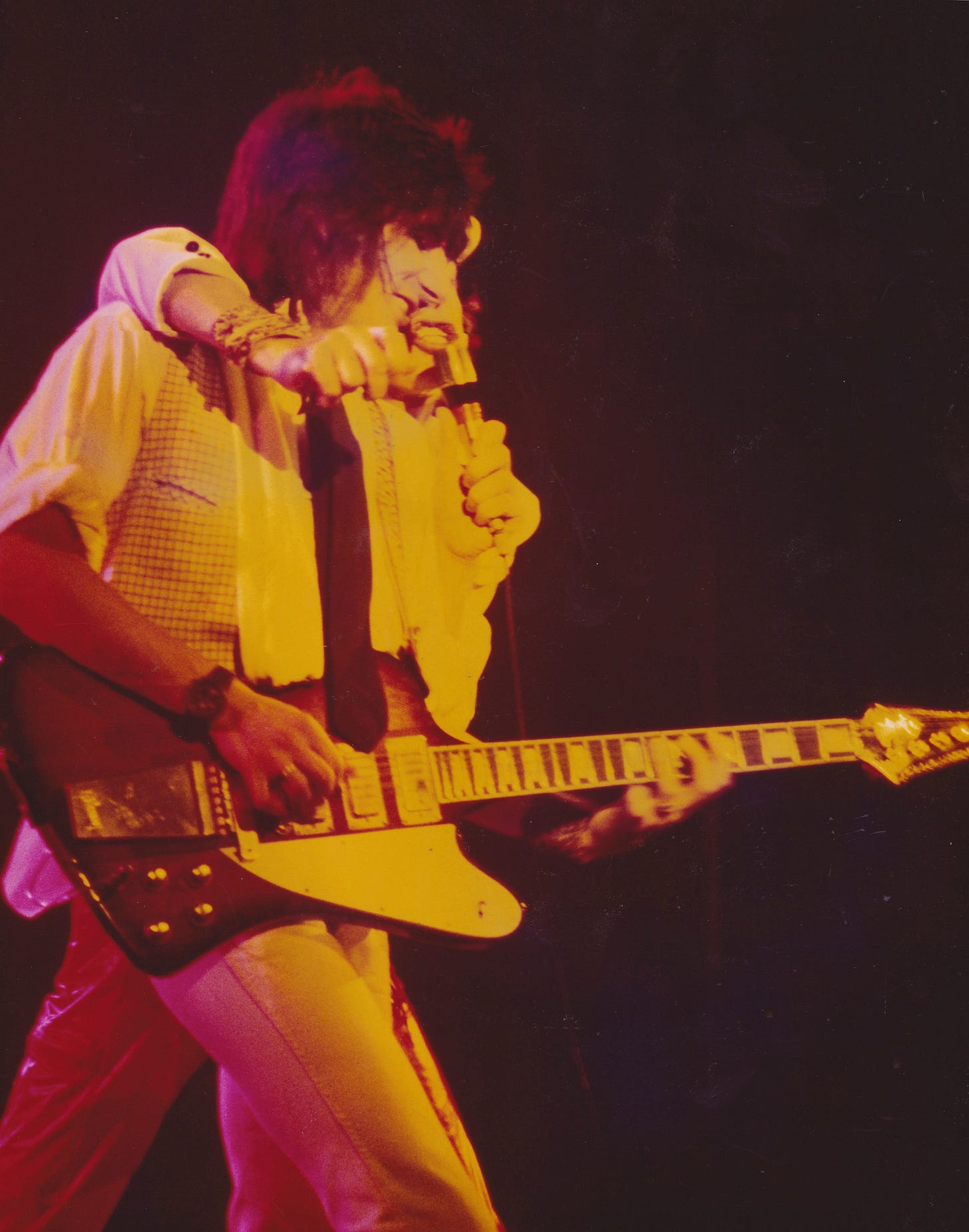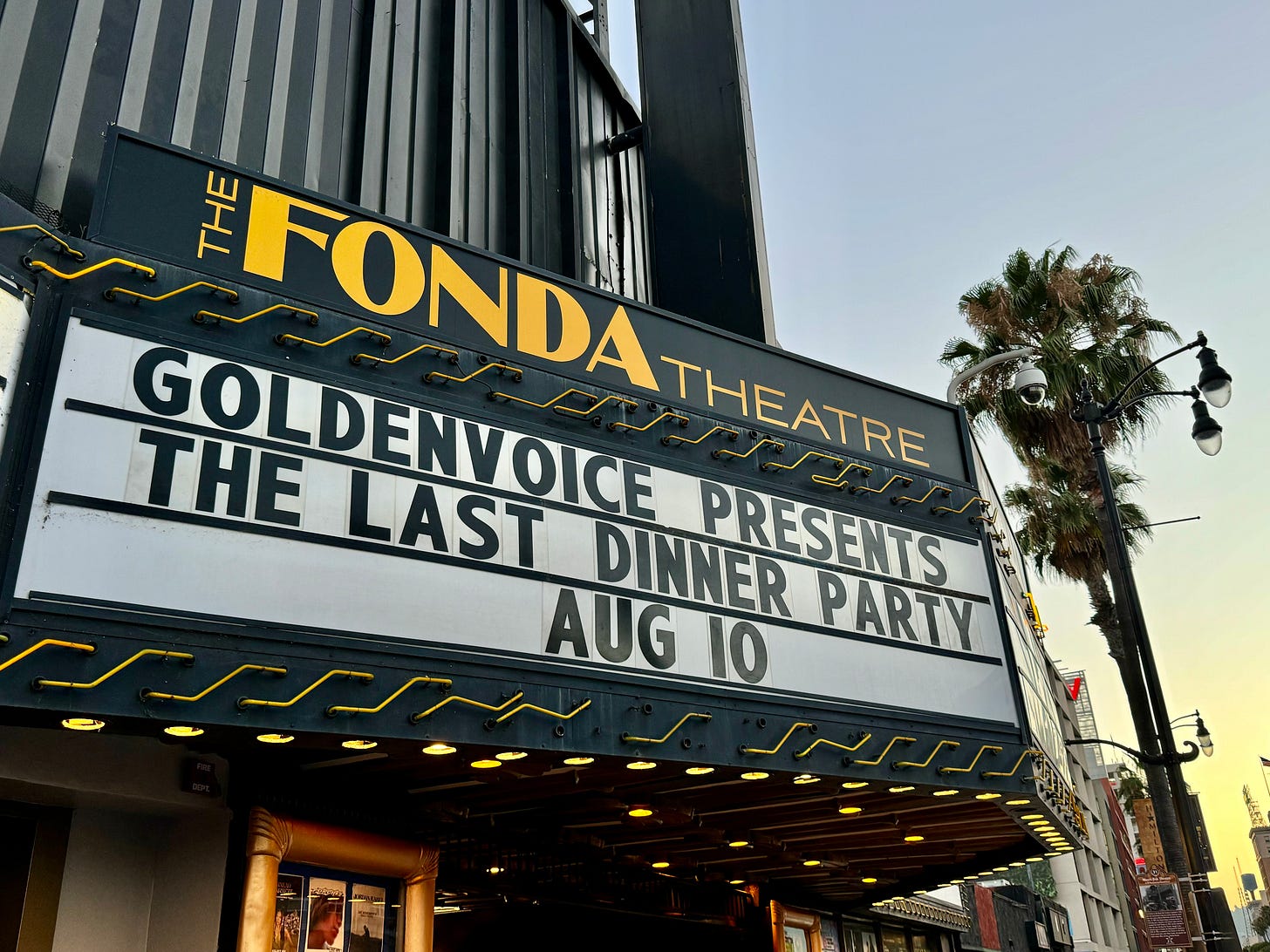Needle drops, they rise—
Ghosts of a crowd scream again.
The room becomes stage.
"The best studio album is just the blueprint. The house is what gets built on stage every night." When Bruce Springsteen said that, he nailed what makes live albums so essential to rock history.
And damn it, The Boss was right! Live albums are where the magic happens—capturing bands high on music, life, and (let's be honest) various substances that would make your D.A.R.E. officer weep. These recordings aren't merely concert souvenirs—they're documents of artistic evolution, cultural moments frozen in amber with hums and crackles, and occasionally, the purest distillation of a band's power and vibrant energy.
There are no do-overs, no mic checks, no pitch corrections possible. Just “roll the tape.”
Creating a transcendent live album is like herding cats while juggling chainsaws requiring a miraculous harmonic convergence of moving parts.
I imagine venue matters enormously—Detroit's Cobo Hall (basically Studio 54 for rock in the '70s) provided the perfect environment for countless legendary recordings (KISS*, Bob Seger, J. Geils*, Journey, Ted Nugent, Blue Öyster Cult and Aerosmith, to name a few).
The acoustics must balance clarity with the crowds atmospheric energy. It can’t be all cowbell. And the crowd's contribution can't be underestimated; Cheap Trick's hysterical Japanese fans on "At Budokan" essentially become additional band members.
The setlist structure matters, it needs masterful pacing—stompers, tear-jerkers, movers, unexpected covers and ballads arranged for maximum emotional impact. It's like planning a dinner party at our villa (I mean, at our house)—appetizers, entrée, dessert—followed by an unplanned nap on the patio couch (AKA a food coma).
And authenticity is crucial; audiences can smell when a performance is too calculated for recording purposes. Live albums need to feel raw, not suspiciously perfect. As Pete Townshend admitted about The Who: "We were never a great studio band. We were a terrible studio band. We were performers. 'Live at Leeds' is The Who at our absolute peak." Translation: we couldn’t behave in studios—but give us a stage to destroy, and we were divine chaos!
Finally, there are the surprise, serendipity moments: Impromptu jams! Special guests. The drummer forgetting what song they're playing. A rant between songs. An onstage OD. These happy accidents become legendary moments.
Now, before we get to the list, let’s talk about the vinyl-covered elephant in the streaming room. For all you kids asking, "What's an album?" Well, it's...sad but true, most music listeners today have NEVER bought an album. Music has become an algorithm-driven stream of singles, divorced from the artistic statement albums once represented. But for those willing to listen, Live albums offer something streaming algorithms can't quantify—the electrical current that runs between artist and audience when both are operating at peak potential. And to answer your question kids—brace yourselves for this archaeological discovery—albums are round black petroleum—based things encoded with sounds that Boomers used to collect that has multiple songs on it by the same artist that you play on a record player…oh, never mind. Just ask your parents. Or their parents.
The history of live rock albums begins before rock itself. Benny Goodman's "The Famous 1938 Carnegie Hall Jazz Concert," released in 1950, created the template. It included appearances from Gene Krupa, Duke Ellington, and Count Basie—essentially the first supergroup! (AKA The Avengers of Jazz) Rock followed suit in 1961 when New Jersey’s Joey Dee and the Starliters released "Doin' the Twist at the Peppermint Lounge." A ballsy move for one-hit wonders, but hey, they made history.
By 1964, The Beach Boys “In Concert” became the first live album to top the charts, while The Yardbirds’ "Five Yardbirds" was their DEBUT album, introducing Eric Clapton's earliest recorded work to the world. Talk about confidence—that’s like showing up on your first day and demanding the corner office plus a secretary and a company car.
Anyway, I was always torn with live albums, not being an artist (unless sarcasm counts), they didn’t sound the same to me. I preferred studio albums. That was of course before I actually went to a live music concert. And that changed everything!
Fact is, now I know that live albums capture something ineffable. At their best, live albums capture what studio perfection never can—the beautiful mess of human connection, the raw power of volume, and that indescribable moment when a band and audience become one organism breathing together. Holy communion, without the host. And in these soulless digital days of algorithmic playlists and sterile productions, a great live album reminds us that rock was built on sweat, volume, and that magical communal experience of losing your mind alongside thousands of other humans doing the exact same thing.
They bottle lightning, preserve adrenaline, and document the zeitgeist in ways studio recordings rarely manage. Good live albums demand attention. They're the musical equivalent of being grabbed by the collar and told, "Listen to this—it matters." And when they work, when all those elements align perfectly, they remind us why we fell in love with rock and roll in the first place.
The 70s witnessed the apex of live concert records. No less than seven live albums reached #1 during this golden decade, including ones by: CSN&Y's "4 Way Street" (1971) (BTW: Just how did these four massive egos fit on one stage?), Elvis Presley (1973), Earth Wind & Fire (1975), Peter Frampton (1976), Paul McCartney & Wings (1976), Barry Manilow's "Barry Manilow Live" (1977)—your mom’s favorite album (And honestly? Rightly so. The man could sell a chorus like nobody else.), and Donna Summer's "Live And More" (1978)—and the "More" was DEFINITELY disco. These weren't mere cash-grabs—they were cultural events that captured artists at their commercial and often creative peaks.
Here's the dirty secret of the music biz: tons of classic live albums only exist because bands owed their bloodsucking labels one more record. So-called "contractual obligation" live albums deserves its own chapter in rock history. Literally, contractual dumps: Jimi Hendrix's "Band of Gypsies" (1971), AC/DC's "Live At Wembley" (2004), Neil Young's "Time Fades Away" (1973), and Van Morrison's "It's Too Late to Stop Now..." (1974) all emerged from contractual necessity rather than artistic planning.
But sometimes these contractual middle fingers became legendary. When Peter Frampton's label was about to drop him, they squeezed out "Frampton Comes Alive!" as a last-ditch cash grab. EIGHT MILLION COPIES LATER, everyone pretended that was the plan all along. Never underestimate the transformative power of a band with something to prove and nothing to lose. Kind of like my Tigers.
And not all live albums are created equal either. We should distinguish the carefully crafted live album from other concert recordings. “Woodstock” doesn't qualify as a true live album—it was sliced, diced and Frankenstein-ed together based on contractual limitations rather than artistic cohesion. And we're not talking about cult favorite recordings either (though that Dead show in Des Moines, late October 1971 deserves mention). The Grateful Dead released over 200 official live recordings (AKA bootlegs). Who has time to listen to all that? Oh right, Deadheads with suspicious amounts of free time and recreational substances.
Which raises a basic question: When everything is documented, does anything remain special? Short answer: No. Long answer: Also no!
Anyway…here’s some of my favorite live albums (not mentioned above):
The Quintet - Jazz at Massey Hall (1953)
John Coltrane – Live! At The Village Vanguard (1962)
Frank Sinatra - Sinatra at the Sands (1963)
Sam Cooke - Live at the Harlem Square Club (1963)
James Brown - Live At The Apollo (1963)
Johnny Cash – At Folsom Prison (1968)
Aretha Franklin – Live At Fillmore West (1971)
The Allman Brothers Band - At Fillmore East (1971)
Traffic - On The Road (1973)
Graham Parker & The Rumour - Live at Marble Arch (1976)
The Kinks - One More From the Road (1980)
U2 - Under a Blood Red Sky (1983)
Peter Gabriel – Plays Live (1983)
Dire Straits – Alchemy (1984)
Talking Heads – Stop Making Sense (1984)
Nirvana – MTV Unplugged In New York (1994)
Leonard Cohen - Live In London (2009)
Nick Cave - Idiot Prayer (2020)
The War on Drugs - Live Drugs (2020)
Tom Petty cynically called most live albums "greatest hits played faster" albums. He wasn't wrong, but the truly transcendent ones capture lightning in a bottle—that magical moment when everyone in the room realizes they're experiencing something they'll brag about witnessing for the next 40 years.
Now if you'll excuse me, I need to crank "Live at Leeds" and pretend my living room is a legendary venue. Don’t mind the air guitar—it’s vintage, like me. And louder.
* I was there and have the ticket stubs to prove it!
Thanks for the privilege of your time, it is the most precious thing we have, and I appreciate it. Be well.
William D. Chalmers © 2025 All Rights Reserved.










